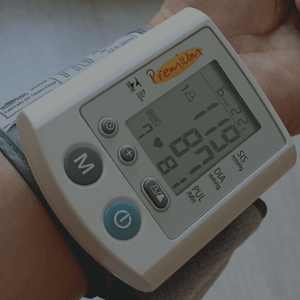
When you are studying for the PT board exam, know that the blood pressure chart, table or list in the study guides from TherapyEd (O’Sullivan) and Scorebuilders (Giles) are now OUTDATED even in the current 2018 version. The blood pressure categorization that they refer to is from 2007; however, the new guidelines are now from 2017. What this means is that you’ll want to know the latest update about the blood pressure guidelines in order to answer the questions correctly going forward when studying for the Cardiovascular System of the FSBPT NPTE blueprint.
What are some of the differences in the new blood pressure guideline?
At a quick glance, the following information is different:
- Prehypertension has been renamed to “Elevated” where both systolic and diastolic pressure values are required
- Hypertension Stage 1 and 2 for systolic and diastolic values are changed starting from a lower value
- Hypertensive Crisis the diastolic value has increased to 120 mmHg
Old Blood Pressure Guideline Chart (2007)
Here’s what you may find from older study guides and resources before 2018.
New Blood Pressure Guideline Chart (2017)
With the new guidelines, you’ll find the “Elevated” where both Systolic and Diastolic are needed to be classified under the new category. Other changes are made in BOLD to help distinguish the values in the Systolic and Diastolic values for Hypertension Stage 1, 2 and Hypertensive Crisis.
What parts of the NPTE would be affected?
This updated blood pressure chart would affect the different content sections of the NPTE. The following is an analysis breakdown from Therapy Exam Prep’s point of view where potential blood pressure questions could be asked on the PT exam based on the blueprint format.
Possible NPTE Type of Questions:
Evaluation
- Identify the blood pressure category that the patient would be classified under
- Identify the signs and symptoms that could be presented based on the category
Examination
- What would be expected to observe when taking the blood pressure
- What the blood pressure values could mean
- Whether to expect the systolic or diastolic to increase or decrease based on activity
Intervention
- What physiological responses may be seen with exercises
- What would be the MOST appropriate action based on what is observed
Non-System Domains
Safety and Protection
- What would be the best positioning based on the blood pressure values
- What would cause a patient to fall
Professional Responsibilities
- Who would you refer back to based on the results
As you can see, it’s good to become familiar with the updated blood pressure guidelines for the NPTE. This update is in addition to the previous general changes for the current 2018-2022 NPTE blueprint format.
To read more about the specific blood pressure guidelines from the American College of Cardiology and American Heart Association specific blood pressure guidelines.
**Update: Scorebuilders has released the second edition of 2018 with the updated Blood Pressure Guidelines.
